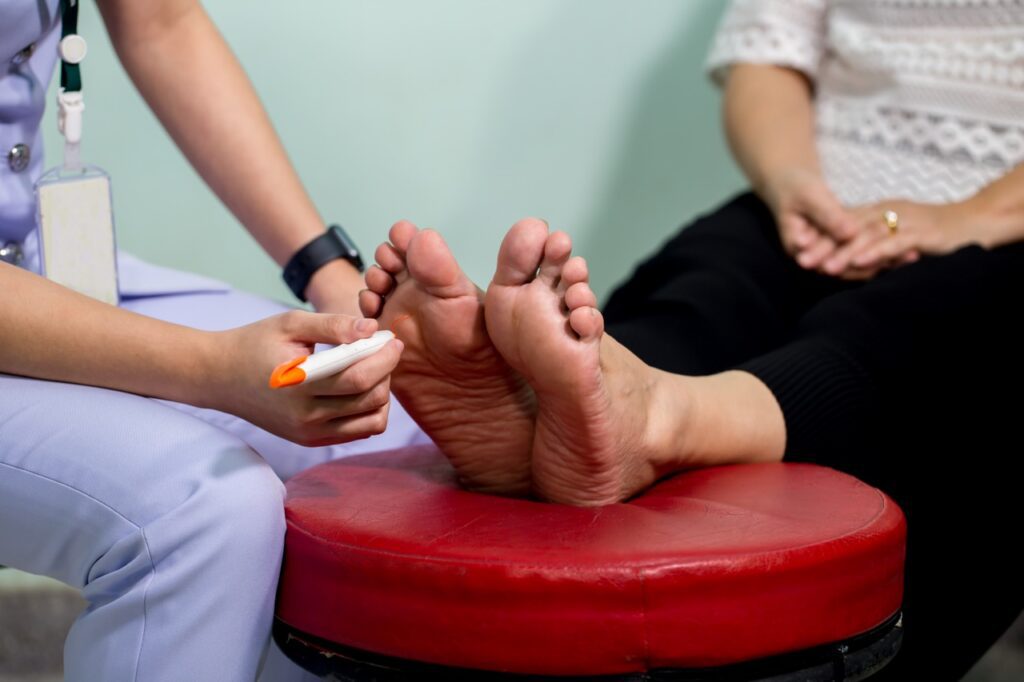Table of Contents
Diabetic Foot Care services offered in Henderson, NV
Diabetic Foot Care FAQs
Why do I need diabetic foot care?
People with diabetes have high blood sugar levels, leading to multiple health problems affecting the feet. These diabetic foot problems typically involve sores or injuries resulting from loss of feeling in the feet (diabetic peripheral neuropathy).
Many people with diabetes also have poor blood flow to their feet. This makes it difficult for sores to heal and increases the risk of infection. Without proper treatment, an infection can lead to tissue damage so severe the only solution is amputation.
Because of these life-changing consequences, diabetic foot care is vital for anyone with diabetes.
What does diabetic foot care involve?
Diabetic foot problems are often preventable if you lead a healthy lifestyle, including regular exercise, a nutritious diet, and quitting smoking. Work closely with your doctor to properly manage your diabetes, and check your feet regularly for sores or signs of infection.
If you suffer from diabetic peripheral neuropathy, you must bring your blood glucose level back to normal to prevent further damage. If your neuropathy causes pain, you can usually treat it with over-the-counter medications.
If neuropathy causes loss of feeling in your feet, take precautions to prevent injury. You should always wear shoes and socks to protect your feet. Ensure your shoes are comfortable and well-fitting to avoid blisters, and check your feet frequently for signs of friction.
Bathe your feet daily, dry them thoroughly, and use moisturizing lotion to stop the skin from drying. Treat cuts or sores immediately and prevent infection by keeping the area clean. If an infection develops, seek immediate medical attention at Las Vegas Foot and Ankle Centers.
What diabetic foot care do podiatrists provide?
Diabetic foot care aims to prevent the problems that lead to diabetic ulcer development. Your podiatrist sees you regularly to examine your feet and check for damage. They trim your nails and treat common issues that could increase your risk of infection, such as corns, calluses, toenail fungus, and ingrown toenails.
People with very poor circulation might require medication to improve it. You might also need treatment for chronic venous insufficiency and peripheral artery disease (PAD). Minimally invasive vascular catheterization procedures or, in some cases, surgery might be necessary to improve blood flow to your feet.
Looking to schedule an appointment with a physician?
To learn more about diabetic foot care and its benefits, call Las Vegas Foot and Ankle Centers or book an appointment online today.


